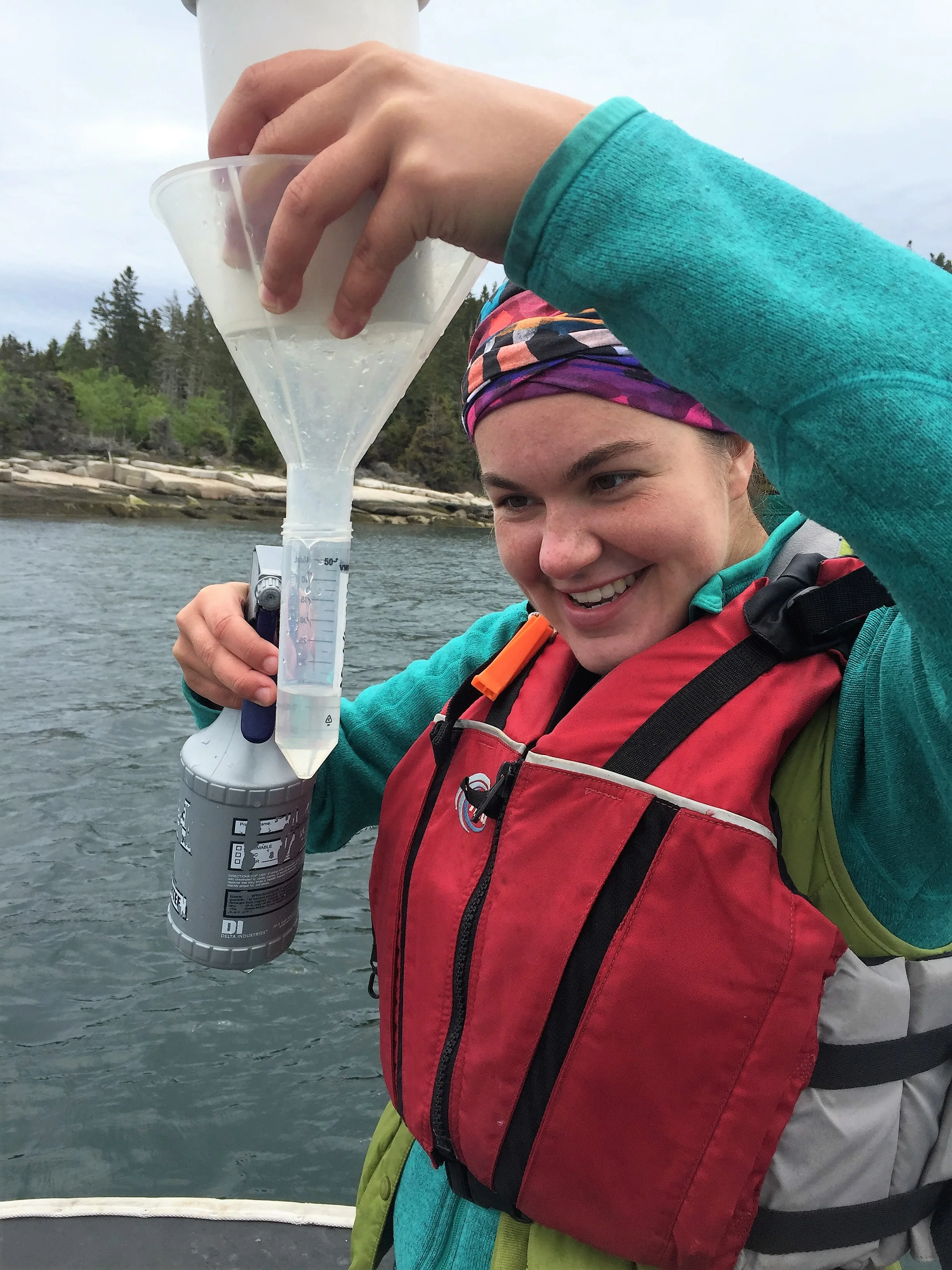Guest post by Research Technician Bailey Moritz
Taking our first phytoplankton sample of the season at our aquaculture site
As waters begin to warm (although it may not feel that way yet!) and nutrients become more abundant, phytoplankton are beginning to bloom off our Maine shores. Seen under the microscope, these tiny algae that make up the base of the ocean food chain form a beautiful kaleidoscope of varied shapes. Some take on the appearance of beaded necklaces or tiny leaves, while others call food to mind with their turnip or pizza slice like forms. However, a number of species can produce toxins that, when consumed by humans eating filter-feeding shellfish, prove quite harmful. “Red tide” as it is commonly called when concentrations are high enough to change the surface water color, builds up in the mussels or clams that feed on it for several weeks. If eaten by someone, the built-up toxin can cause paralytic, diuretic, or amnesic shellfish poisoning (PSP, DSP, or ASP), depending on the phytoplankton species present.
Target species (yellow) to keep an eye out for
The Department of Marine Resources (DMR) regularly tests sites up and down the coast to make sure that an area with a harmful algal bloom will be closed to shellfish harvesting in time to minimize health risks. They rely on volunteer monitoring efforts to make this a success, and we got certified as official phyto-samplers last week. Out on Hurricane, we are sampling weekly at our aquaculture site to report back to DMRs public health branch on the presence of any of these potentially harmful species. If the water is consistently clear of harmful algal blooms over time, we may eventually be able to consume the scallops that we grow here.
An array of different species, including thin chains of Pseudo-nitzschia
Our first sample this week had plenty to look at and I found it so rewarding and fun to learn the species identification. There was a surprising amount of Pseudo-nitzschia which can lead to ASP, although the toxin is not always produced. That will be something to keep an eye on and we sent a report in to DMR. Monitoring coastal waters for changes in phytoplankton populations is critical for protecting those of us who enjoy eating shellfish, the people who grow or harvest them, and to stay vigilant for new species that are moving northward due to climate change.

